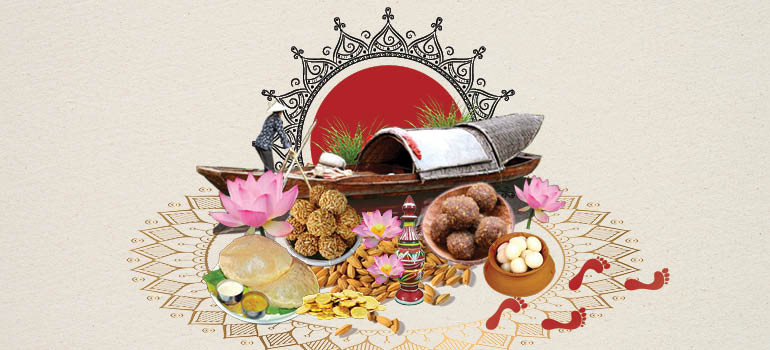Our member Ms S. Roy used to adore celebrating festive occasions with her family and relatives in her ancestral home in Faridpur, East Bengal. She enjoyed narrating her journey there as a child.
My last visit to our ancestral house in Faridpur, East Bengal for Laxmi puja was in the year 1946. During that time, we resided near the banks of the River Padma in a place called Paksheel. A notable bridge known as Harding’s Bridge, or Sara Bridge in Bangla, was a familiar landmark in the vicinity.
Our journey to Faridpur began by train, and upon our arrival at Faridpur station, the next part of our adventure involved a sizeable launch, followed by a delightful boat ride. Just as we did at home, we spread out mats and sheets in the boats, allowing us to fully relish the boat journey.
At a place called Bhanga, we made a brief stop to enjoy a scrumptious lunch at the home of distant relatives. They warmly greeted us with fresh cow’s milk, and the lunch itself was a culinary delight, featuring freshly harvested vegetables and fish straight from the ponds. The meal not only pleased the palate but also showcased the care and comfort with which they hosted us.
Following our delightful lunch, we reboarded the boats to continue our journey. On numerous occasions, our boats would become ensnared in the lush paddy fields, requiring careful navigation to free them, and we’d row on. The timing of our voyage was impeccable, and we reached our village just before nightfall.
Eager eyes were always on the lookout for our arrival, and the moment our boats appeared on the horizon, someone would dash off to inform everyone else. The news of our impending arrival would spread like wildfire, drawing most of our relatives to the riverside to greet us. It was a heartwarming sight to witness them all lined up, ready to extend a warm welcome.
To ascend from the river, we ascended a flight of stairs, a remarkable feature being that these steps were constructed from Date trees. It was a common practice in East Bengal, now known as Bangladesh, for riverside stairs to be crafted from these trees.
It was customary for us to begin our visit by paying our respects at the household temple, offering prayers to the deities and the sacred Tulsi plant before entering the house. In East Bengal, many well-off Hindu families, including ours, venerated Goddess Kali and Kartik, often maintaining a dedicated mandap or temple within their homes.
During the Laxmi puja, everyone would come together to create delightful treats like ???? and ????. In mango season, they would diligently prepare ???????? to last the entire year. Witnessing the remarkable stamina of the women as they spent the entire afternoon crafting these delicacies was truly inspiring. Additionally, the locally famous date jaggery was a special treat.
In the winter season, ?????? was stirred in big woks on mud ovens in the courtyards of each house, and it would serve the household throughout the year. The idols of Goddess Laxmi graced our home temples, and nearly every household in the neighborhood participated in her worship. After the puja, we’d visit different houses in the neighborhood, where we were offered ???? and ???? as part of the cherished tradition.
As I hailed from the city, some believed I might not relish these sweets and attempted to make ????? from stored flour for me. However, to their delight and satisfaction, I found the locally handmade sweets to be the most enjoyable part of the experience.
Those days, though now distant like a dream, remain a treasured and wonderful memory that I hold dear.
Categories
Laxmi Puja Memories from 1946

